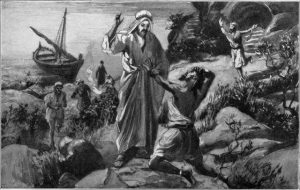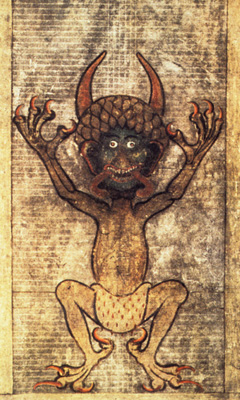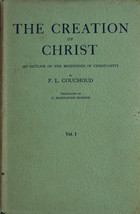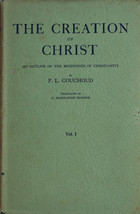The single most solid fact about Jesus’ life is his death: he was executed by the Roman prefect Pilate, on or around Passover, in the manner Rome reserved particularly for Roman insurrectionists, namely, crucifixion. (p.8 of Jesus of Nazareth, King of the Jews by Paula Fredriksen)
The same was said by one of the most renowned critical scholars of yesteryear.
Alfred Loisy is quoted as holding similar thoughts. His critical analysis of the Gospels leaves him thinking that there is only one certain historical fact to be found in them:
There is no actual consistency in the Gospel story, save the crucifixion of Jesus, condemned by Pontius Pilate as a Messianic agitator.
This is cited from La Passion de Marduk, “Rev. d’Hist et de Litt. Relig.,” 1922, pp. 297-8 in The Enigma of Jesus by Paul Louis Couchoud (translated by Winifred Whale), 1924, p. 70.
Couchoud elaborates on Loisy’s view:
To his affirmation on this point Loisy has always adhered. In his autobiography, which is a master-piece of the literature of the mind, the grave and dramatic story of a conscience, he says, under the date 1894: —
Not a single incident in the whole symbolic narrative did I accept literally save that Jesus had been crucified under Pontius Pilate. [Choses Passées, 165]
In 1907 he wrote:–
If Jesus was not condemned to death as King of the Jews, that is as Messiah, by his own confession, one might just as well maintain that he never existed. [Les Evangiles Synoptiques, I, p. 212]
In 1910 he repeated:–
If this fact could be called in question, there would be no reason to maintain the existence of Jesus. [Jésus et la Tradition Evangélique]
Thus, only by his death sentence does Jesus become historical. The thread is very thin. Does this imply that Loisy accepts the story of the Passion as history? Far from it. Almost all the incidents of the cycle of the Passion —
far from constituting a series of recollections, . . . have been deduced from biblical texts. . . . One might almost say that the Passion was built up on Psalm xxii. . . . Facts are related because of their mystical value, not according to their historical development. . . . The only consistent part of the whole trial is the offence of the Messianic aspiration. [La Légende de Jésus, “Rev. d’Hist. et de Litt. Relig.,” 1922, p. 434, 453, 435, 448]
Loisy regards the greater part of the Passion story as mythological:–
The Gospels do not relate the death of Jesus. They relate the myth of salvation realized by his death, perpetuated in a way by the Christian Eucharist, sympathetically commemorated and renewed in the Easter Festival. The Christian myth is withoutdoubt related to the other salvation myths. It is by no mere chance that the resurrection of Christ on the third day after his death coincides with the ritual of the Feast of Adonis. The Barabbas incident, the burial by Joseph of Arimathea, the discovery of the empty grave, are apologetic fictions. The incident of the two thieves crucified with Jesus may well be of the same order. And there is no reason why their invention should not have been facilitated or suggested in one way or another by mythologies of surrounding countries. [La Passion de Marduk, “Rev. d’Hist et de Litt. Relig.,” 1922, pp. 297]
But the bare fact of the crucifixion of Jesus sentenced by Pontius Pilate, that remains invulnerable. Despite Psalm xxii, which is put into the very mouth of Jesus on the Cross, and which is quite enough to set the mystical imagination working on the crucifixion; despite Paul’s express declaration that Jesus was crucified by Celestial Powers (and Pilate was certainly not one of them), Loisy maintains the crucifixion of Jesus sentenced by Pilate to be incontestable. Well assured of this historical fact, he fearlessly wields the trenchant blade of his criticism to cut away nearly all the rest.
I imagine a wood-cutter astride on a big branch and hacking the tree trunk. As each splinter flies away, those below cry out: “Take care! It will break and you will fall! He answers with a knowing smile: “Don’t be afraid! However little I have, I shall be able to hold on to it.”
Astride on Pilate’s judgment given by reason of Messianic agitation, all that Loisy saves of the Gospels is such passages as may fit in with the action and the doctrine of a Messianic agitator. According to this criterion, he decides whether a passage has the air of antiquity and reality. The rest is rejected. Thus he arrives at a Jesus who is very thin and very meagre, but who is consistent, comprehensible, coherent, and historically possible.
If one reduces the Jesus of the critics to terms of actual history, one obtains something like the following:–
Couchoud here reminds us of what we learn of the period 6 to 66 ce from the historian Josephus. . . .
In the year 6 of our era, Judas the Galilean attempted to oppose the census instituted by the legate P. Sulpicius Quirinius, and founded the groups of Zelotes, who recognized no other master than God.
Somewhere between 44 and 46, the Prophet Theudas, at the head of a band of followers, marched towards the Jordan and Jerusalem, proclaiming that the waters of the Jordan would divide at the sound of his voice. The Procurator, Cuspius Fadus, had the band dispersed by his cavalry. The Prophet’s head was brought to Jerusalem.
Somewhere between 52 and 58, an Egyptian Jew led a mob as far as the Mount of Olives, promising that the walls of Jerusalem would fall at his command. The Procurator Felix sallied forth at the head of the garrison. Four hundred fanatics were killed, two hundred taken prisoner: the Egyptian disappeared.
To these three must be added a fourth, omitted by Josephus, reconstituted by Loisy. Somewhere between 26 and 36, a Galilean peasant, a village artisan named Jesus,
“began to proclaim the coming of God. After preaching for a while in Galilee, where he enlisted only a few followers, he came to Jerusalem for Easter, and there all he succeeded in accomplishing was to get condemned to death on the cross, like any common agitator, by the Procurator, Pontius Pilate.” [A. Loisy, Les Premières Années du Christianisme, “Rev. d’Hist et de Litt. Relig.,” 1920, p. 162]
That is all that is known about him. Everything else was imagined by the marvellous faith of his disciples. (The Enigma of Jesus, pp. 71-74)
John Crossan has “infamously/famously” made the same point: http://www.youtube.com/watch?feature=player_embedded&v=EUxTVGiHLco
Indeed, the adherence of scholars to the crucifixion of Jesus as the one single absolutely certain bed-rock fact is instructive. Historical Jesus scholars claim to possess the alchemical-like powers to produce facts out of criteria where only fictional or theological tales existed before. One of these criteria holds that if a narrative detail serves a theological interest or appears to be there to fulfil a Scripture, then it is reasonable to hold its historical authenticity suspect.
But was not the very concept of the crucifixion of Jesus entirely a theological construct from the very first time it appears in the record in Paul’s writings?
And if the single most solid “fact” about Jesus is entirely a theological event where is that remaining stick that would save the wood-cutter from falling? The image can be more ironic if one imagines the tree resembling a cross.
Like this:
Like Loading...









